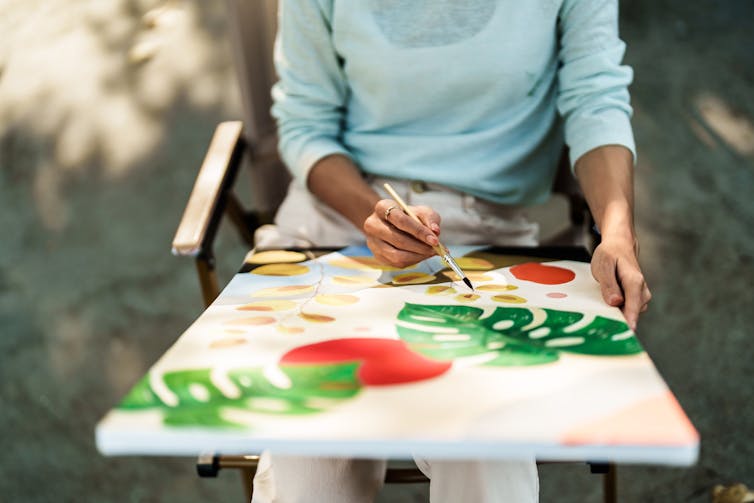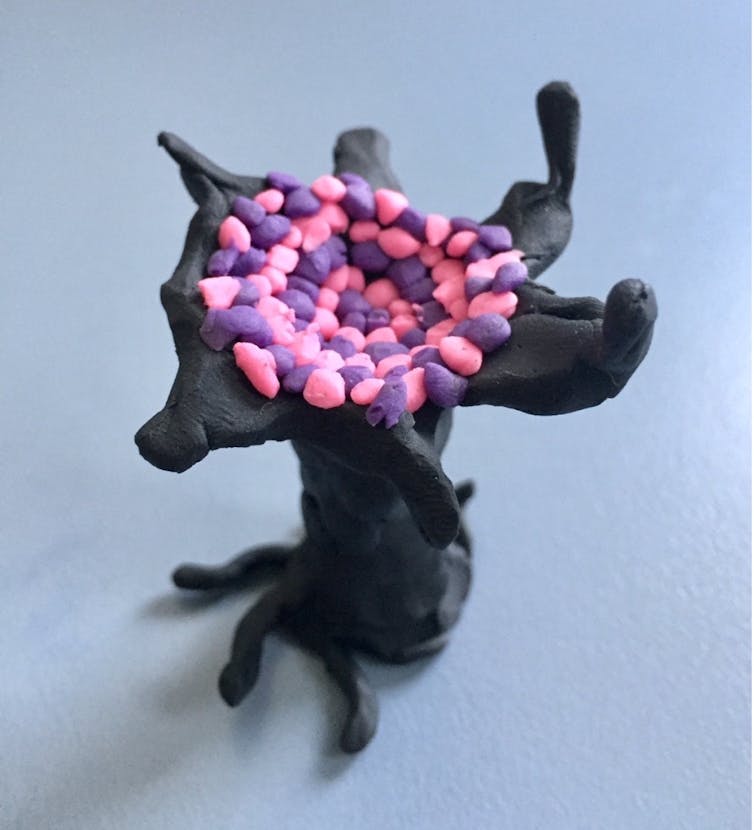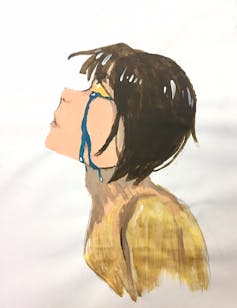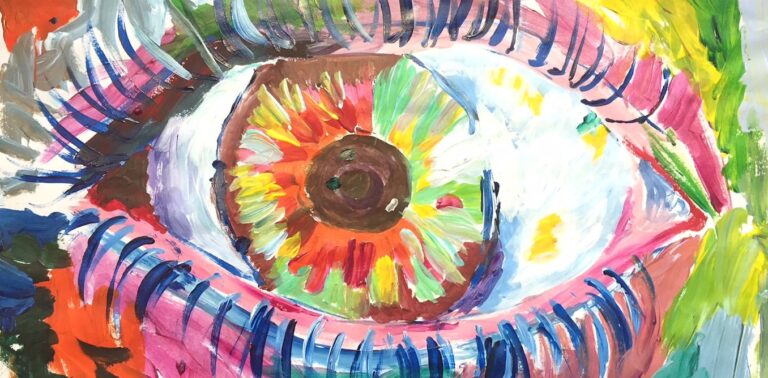The creation of art for healing purposes dates back tens of thousands of years to the practices of indigenous peoples around the world. Art therapy uses creative processes, primarily visual arts such as painting, drawing, and sculpture, with the aim of improving physical health and mental well-being.
When faced with a serious physical or mental illness, it can be difficult to put the experience into words. Art therapists help people explore and process overwhelming thoughts, feelings, and experiences through a reflective art-making process. This differs from art classes, which often focus on the technical aspects of the artwork or the aesthetics of the final product.
Art therapy can be used to support the treatment of a variety of physical and mental health conditions. It has been associated with benefits such as improved self-awareness, social connection, and emotional regulation, while reducing levels of distress, anxiety, and even pain scores.
A study published this week in the Journal of Mental Health found that art therapy in hospital mental health departments is associated with positive outcomes for children and adolescents.
Options for those who can't find the words
While participation in talk therapy may be influenced by the nature of the illness, verbal reflection is optional in art therapy.
If possible, after completing a work of art, a person can explore the meaning of their work with an art therapist and transform the unspoken symbolic content into a verbal reflection.
However, because the speaking element is not central to the treatment process, art therapy is an accessible option for those who cannot find the words to describe their experiences.
Read more: Creative art therapy helps people with dementia become social and express their grief
Art therapy has helped improve the mental health of people who have experienced trauma, people with eating disorders, schizophrenia, dementia, and children with autism.
Art therapy has also been associated with improved treatment outcomes for people with a variety of physical health conditions. These include reducing levels of anxiety, depression, and fatigue in cancer patients, increasing psychological stability in heart disease patients, and improving social connections in people who have experienced traumatic brain injury.
Art therapy has been associated with improving mood and anxiety levels in hospitalized patients and reducing pain, fatigue, and depression in palliative care patients.

Mojo CP/Shutterstock
our research
Mental illness, including among children and young people, is a major challenge for our society. Most care occurs in the community, but a small number of young people require hospital care to ensure their safety.
In this environment, actions that impose greater restrictions, such as seclusion or physical restraint, may be temporarily used as a last resort to ensure immediate physical safety. However, these “restrictive practices” have negative consequences for patients and healthcare professionals, including post-traumatic stress.
Worryingly, staff report a lack of alternative measures to keep patients safe. However, eliminating restrictive practices is a key objective of mental health services in Australia and internationally.
Read more: “The relationship with art that changed my life”: The magic of art and health
Our study examined over 6 years of data from child and adolescent mental health units in Australia. We sought to determine whether restrictive practices decreased during the period when art therapy was provided on the unit compared to the period when art therapy was not provided.
We found a clear association between the provision of art therapy and a reduction in the frequency of in-unit seclusion, physical restraint, and sedative injections.
I don't know the exact reason for this. However, art therapy may reduce patients' levels of severe distress, thereby reducing the risk of patients harming themselves or others and the likelihood that staff will engage in restrictive practices to prevent this. .

Author provided
However, hospitalization requires multiple therapeutic interventions, including conversation-based therapy and medication. Confirming the effectiveness of a therapeutic intervention requires controlled clinical trials in which subjects are randomly assigned to one or the other treatment.
Although our study was an observational study, randomized controlled trials support the benefits of art therapy in youth mental health services. For example, a 2011 hospital-based study found that among adolescents who randomly received trauma-focused art therapy, symptoms of post-traumatic stress disorder were reduced compared to a “control” arts and crafts group. It was shown that

Author provided
What do young people think?
Previous research has shown that for adolescents receiving hospital-based mental health care, art therapy is considered the most helpful group therapy intervention compared to other talk-based therapy groups and creative activities. I found out that there is.
In yet-to-be-published research, we are talking to young people to better understand their experiences with art therapy and why it reduces distress. One young person receiving art therapy in an acute mental health service said:
[Art therapy] It's a way to express your feelings without being judged. […] Thanks to this, I was able to release a lot of things that I had bottled up and things that I couldn't explain in words.
promising area
There is a burgeoning body of research showing the benefits of art therapy for physical health, especially mental health, highlighting the value of creative and innovative approaches to treatment in medicine.
There are opportunities to expand art therapy services in a variety of medical settings. This would make art therapy more accessible to people with a variety of physical and mental health conditions.


